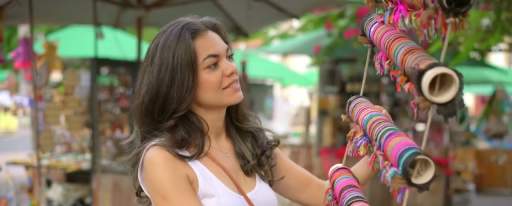About Us
Dominicans have a reputation for being some of the friendliest people you will ever meet. They exude passion, in the speed at which they speak, in the way they dress and dance, and in their embrace of their fellow man, whether neighbor or visitor. Their explosive energy could be explained in their mix of Taino, African and European roots. But also other European, Asian and Middle Eastern communities have influenced and enriched the cultural landscape of the Dominican Republic since the 19th century, turning the population and culture into a fascinating mestizaje. You will see how our many influences manifest themselves across regions in food, music, celebrations and customs.
TAINO ORIGINS
The first inhabitants of the Dominican Republic were the brave and skilled indigenous people, Taino-Arawak, who first settled on this side of the island before the arrival of Christopher Columbus and the Spanish. The Taino had multiple kingdoms, each ruled by a chief or cacique, and they coexisted peacefully. There were several brave Taino leaders who rebelled against Spanish colonization and enslavement. Cacique Caonabo, from the Samaná region was the first to lead a revolt.
The Tainos practiced complex agriculture, but they were also talented artisans and believed in the medicinal power of plants and natural remedies. Today, their only vestige is found in the caves where they left pictographs and petroglyphs, mainly in Samaná, Bayahíbe, San Cristóbal and Enriquillo, as well as the different museums around the country, especially the Museum of the Dominican Man in Santo Domingo, and the Regional Archaeological Museum Altos de Chavón in La Romana.
IMMIGRANTS
The welcoming nature of the Dominican Republic, along with historical events, has resulted in several migrant communities settling and blending into the cultural diversity of the Dominican Republic. Some are fairly recent, while others settled here in the 19th and 20th centuries.
Sosúa has a Jewish community, due to the approximately 600 Jews who arrived between 1940 and 1945 escaping Nazi persecution during World War II, thanks to visas offered by the Dominican government. The Jewish Museum in Sosúa commemorates their journey and contributions to the meat and dairy industries on the north coast.
Southeast of the Dominican Republic, in San Pedro de Macoris, are the Cocolos, Afro-descendants from neighboring English-speaking Caribbean islands such as Tortola, Antigua and St. Vincent, among others who migrated to the Dominican Republic in the late 19th century. They worked as laborers and technicians in the Dominican sugar production industry. In Samaná, descendants of freed African-American Americans who moved to the Dominican Republic in the 19th century continue to practice their religion and rituals.
In the mountains in the center of the country you will find the Japanese community in Constanza, and French and Italian communities to the north on the Samaná peninsula.
The Dominican Republic also has a small but strong Lebanese, Syrian and Palestinian community that emigrated from the Ottoman Empire in the early 20th century. They gradually integrated into Dominican culture, rising to high political ranks.
All of these groups have contributed greatly to the growth and cultural makeup of the Dominican Republic, reflected in the food, culture and events throughout the country.
DOMINICANS TODAY
It won't take you long to meet the locals or to get a sense of the way Dominicans live. While modernism and globalization have affected the way of life in large and small cities, Dominicans remain the same in their interactions with other people. Courtesy and hospitality are core values, particularly in rural areas. Helping visitors or neighbors, and sharing a plate of food are normal activities. Family is of great importance and should be cared for and appreciated. Go to the beach or rivers on weekends and you will discover the love Dominicans have for spending time with their loved ones, cooking outdoors and sharing laughter. Affectionate in words and actions, romance runs in the blood of Dominicans. Life is to be shared and lived to the fullest.
TRADITIONS
While certain traditions are less and less practiced in the cities compared to the past, there still remains the importance of two seasons, mainly in rural areas, which are celebrated as a family: Christmas and Easter.
Each of these holidays represents a symbolic time for Dominicans, who return to their respective hometowns with their families and spend the celebrations with their loved ones, cooking and enjoying traditional dishes, dancing and relaxing.
Christmas is one of the most festive times of the year, apart from Carnival in February. This is particularly noticeable in the countryside, when families gather and go from house to house to eat, drink and dance. On Christmas Eve, whole pigs are roasted in the backyard all night long, while families listen to music and share drinks, and everyone watches the meat. The tradition is to stay up and party until dawn, when the meat is finally ready.
During Easter, on Semana Santa-the other longest holiday weekend-Dominicans escape their daily routine as they do at Christmas. While some head to the beach instead of practicing religion, traditions remain: celebrating Holy Week by going to church on Good Friday and Holy Saturday, but also enjoying hearty bowls of habichuelas con dulce, a Dominican sweet bean dessert typical this time of year.
RELIGION
Most Dominicans are Roman Catholic, but there are also other Christian denominations, including Jehovah's Witnesses and evangelists. Today, various forms of syncretic religion, an African influence, are also still practiced in rural areas. No matter what religion they practice, Dominicans are a people of faith with a strong belief in God. You will hear references to that effect in their everyday language.

